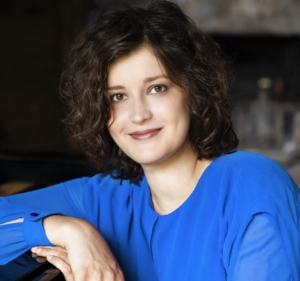Program Notes – February 24, 2024
Written by Todd Giles
Florence Price: Colonial Dance (date unknown)
Florence Price (1887–1953) was an American composer, teacher, pianist, and organist born in Little Rock, Arkansas. Price, who graduated from the New England Conservatory of Music in Boston in 1906 with a double major in organ and piano pedagogy, composed nearly four hundred works, including four symphonies, art songs, chamber works, arrangements for spirituals, pieces for solo organ, and two piano and two violin concertos. In a word, she was prolific. Add to that the fact that Price was an African American woman during a time of violent racial strife in the South—not to mention that many of her works were lost until a trove of manuscripts was found in her former home in 2009—and we see, in Price’s unique life and music, a prime example of the importance of the widening of the classical music canon by scholars, performers, and orchestras like the WFSO over the last several decades. While Price is finally getting her artistic due, it is interesting to note that only five of her fifteen orchestral works were performed during her lifetime—and most of those only once.
Upon graduation, Price returned to Arkansas to teach. In 1912 she married, and as was the norm at the time, she gave up her own career to play second fiddle to her husband. Due to the increasing racial violence in Arkansas in the 1920s, the couple joined the northerly Great Migration to escape the Jim Crow South. They settled in Chicago, where Price became part of the Chicago Black Renaissance, rubbing artistic shoulders with the likes of poet Langston Hughes and singer Marian Anderson. Inspired by her newfound colleagues, Price developed her compositional voice by embracing African American spirituals and dance rhythms, something that white European male composers Antonin Dvorak and Frederick Delius likewise did when they visited the American South in the previous century.
Price’s six-minute Colonial Dance, for which we have no date of composition, is a brief, rapidly-moving symphonic work written in triple time. For Price, “Rhythm is of preeminent importance. In the dance, it is a compelling, onward-sweeping force that tolerates no interruption.” This energetic and melodic work is full of festive rhythms inspired by African American folk music and dance, while at the same time very much maintaining a footing in the classical European tradition, highlighting Price’s ability to nod to both traditions while also developing her own unique voice.
Robert Schumann: Symphony No. 4 in D minor, Op. 120 (1841/1851)
Robert Schumann (1810–1856) epitomized the persona of the Romantic composer—he was passionate to the point of obsession and battled debilitating bouts of depression that led to an untimely death at age forty-six. Though his symphonies were largely dismissed by critics as awkward and muddy in composition, Schumann more than made up for it as one of the undisputed masters of mid-19th century piano alongside Frederic Chopin and Franz Liszt. The work finally published as the Symphony No. 4 in D minor in 1853 was originally premiered in 1841 as his Second Symphony.
First performed publicly alongside his Overture, Scherzo and Finale, Op. 52, the Second Symphony had the unfortunate fate of being introduced to the concertgoing public on the same program that two of the era’s most virtuosic pianists, Clara Schumann and Franz Liszt, appeared. To dampen enthusiasm even more, Felix Mendelssohn, who was scheduled to conduct, had to pull out at the last minute. Two years after its lackluster premier, Schumann was still unable to get the work published, so he shelved it until after the success of his third symphonic venture, the Rhenish Symphony.
Even with its lackluster reception, the Fourth is regarded as a landmark in the history of the genre. According to Schumann biographer Judith Chernaik, “[a]long with Mendelssohn’s Italian and Scottish symphonies, Schumann’s symphonies define the Romantic genre as a distinctive development of well-established classical form, building on past masters but pointing toward the future.” What makes the Fourth unusual is that, although it conforms to traditional symphonic form, it is performed without pauses between movements. In fact, Schumann had considered naming the revised cyclic work the “Symphonic Fantasy.”
The Fourth Symphony’s evocative introductory movement presents its themes gradually, slowly accelerating into the body of the movement, marked Andante, transforming from the ominous opening key of D minor into an exhilarating D major. While the movement is firmly embedded in the jumpy first theme of the exposition, there is a sense of continual forward momentum as new themes are developed and juxtaposed with one another, some spirited, others majestic. In contrast to the dramatic opening movement, the brief sentimental Romanze begins with an airy theme played by the cellos and oboe, leading into an elegiac and songlike lyricism before jumping right into the more intense and dark-toned Scherzo, which alternates between the Beethovenesque vigor of the cyclic melody from the first movement and the gentler, flowing trio section. Beethoven’s Fifth comes to mind at the end of the movement as the trio section fades into the mysterious bridge leading into the closing movement. As with the opening movement, the Finale slowly swells from D minor, working its way back into a bold and triumphant D major as it returns to material from each of the preceding movements, similar to the finale of Beethoven’s Ninth. Building momentum even more energetically in the coda section, the cyclic Symphony No. 4 of Schumann comes to memorable and exuberant conclusion.
Sergei Rachmaninoff: Piano Concerto No. 3 in D minor, Op. 30 (1909)
Sergei Rachmaninoff (1873–1943), one of the foremost piano virtuosos in history, found himself on the cusp of two very different musical and artistic periods—the lush and passionate Romanticism of the late 1800s and the dissonant and progressive Modernism of the early 1900s. His was a traditional and nostalgic temperament, like Tchaikovsky’s before him. Rachmaninoff was just twenty when Tchaikovsky died in 1893. Ahead lie the paths of Stravinsky, nine years his junior, and Prokofiev, eighteen. Along with the music of his elder countryman, Rachmaninoff was also influenced by Schumann, Chopin, and Liszt. The Modernist bandwagon was not for Rachmaninoff; rather, his work was classically structured, harmonic, expressive, full of memorable melodies, and that brooding Russian melancholy.
Rachmaninoff’s concertos and solo works for piano are some of the most oft-performed and challenging music in the concert repertoire, representing the twilight of the late Romantic era in their expansive and rhapsodic reach. The Piano Concerto No. 3 in D minor is no exception. Rachmaninoff composed it in 1909 to headline his upcoming concert tour of the US. The new concerto was finished in just over a week before setting sail for New York, where it premiered with the composer at the piano alongside the New York Symphony in November of that year. He next performed the work in January 1910 under the baton of Gustav Mahler at Carnegie Hall.
Rachmaninoff liked to compose memorable beginnings for his piano concertos. The First and Fourth, for example, open rather aggressively, whereas the Second opens with a series of tolling chords. The Third sounds like it is already underway when we begin listening as the Allegro gently and briefly begins in the orchestra before the piano overlays the melancholic first theme. Bits of the second theme are introduced by the horn, clarinet, trumpet, oboe and piano before being fully taken up by the strings. The development section brings these two themes together, leading to a highly demanding cadenza before the opening movement comes to a quiet conclusion. The second movement, marked Intermezzo, is a brooding and expansive adagio that links the more technically challenging outer movements. With no pause, we explode into the Finale, the concerto’s most spirited movement, which continues to demand a dazzling display of virtuosity and stamina from the soloist. Here are recalled the initial two themes from the opening movement, played with a rhythmic fervor, leading into the soaring coda which brings the work to a rousing conclusion.





